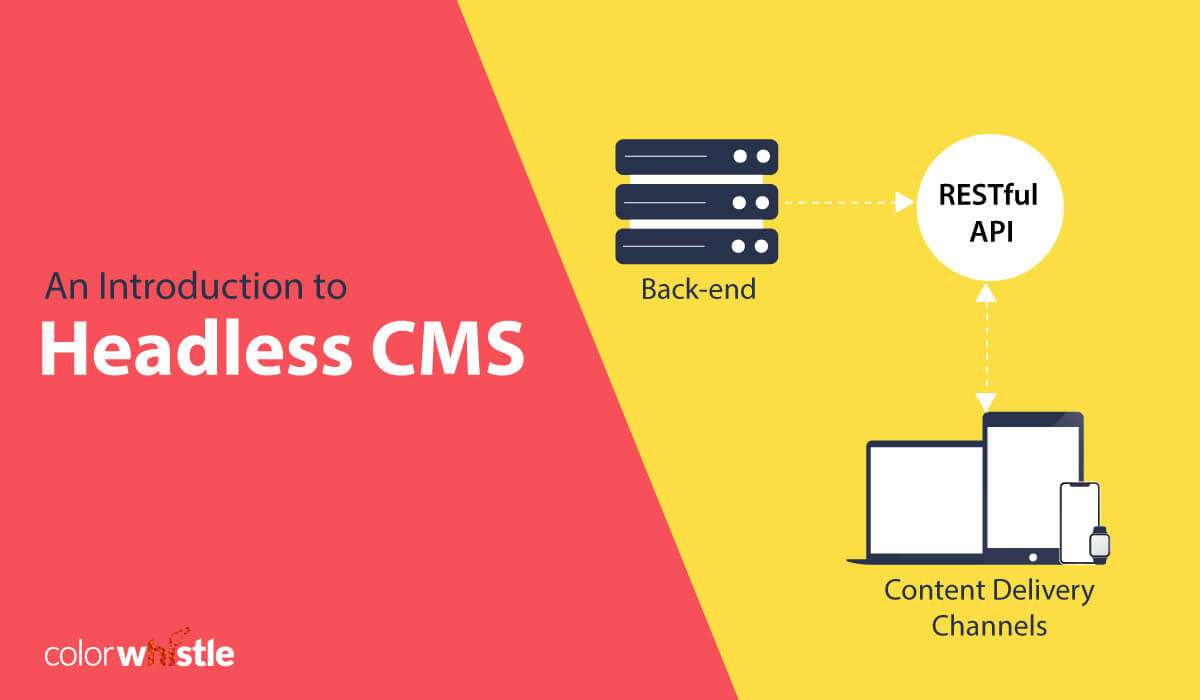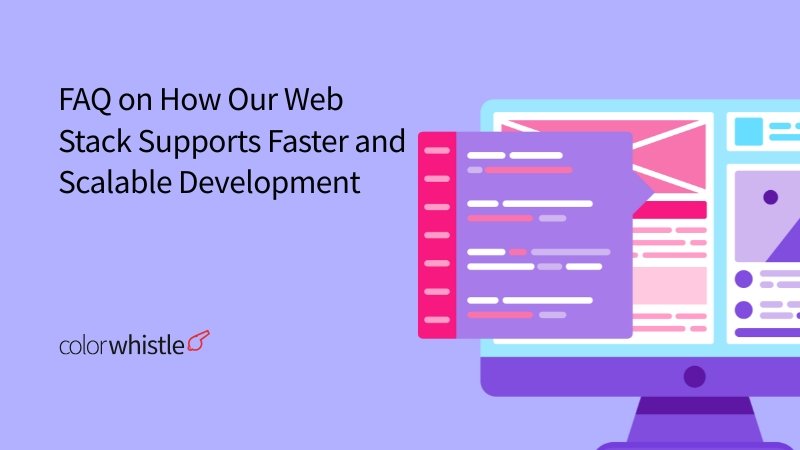In this blog, we will cover the basics of headless CMS, different headless CMS options, use cases, security and more.
As each day passes by, we see more and more devices coming to the market.
Here are some eye-opening statistics.
- Gartner predicts that there will be 20.4 Billion IoT devices by 2020
- PWC estimates that 90% of automobiles will be connected to the internet by 2020
- Former Cisco researcher David Evans calculated that every second, another 127 devices are connected to the internet
- Ericsson predicts that there will be 3.5 billion cellular IoT connections by 2023
- McKinsey Global Institute suggests the total economic impact of IoT could range between $4 and $11 trillion per year by 2025
Apart from IoT, there are other devices like smartwatches, VR experiences, wearable technologies and smart TVs. The usage of different devices, platforms, and apps is changing the way companies present content. Customers are also learning what great personalization feels like from industry leaders like Amazon, Netflix, Spotify, and others.
According to Forrester, 70% of North American companies either use or plan to use a content management system. Unfortunately, traditional CMS tools offer little flexibility for delivering content in new formats. That is why many developers are opting to go headless. Brands like Smashing Magazine, Oliver Bonas and Bindertek have already moved to headless.
In this post, we will discover everything you need to know about headless CMS.
Let’s dive in.
1. What is Headless CMS?
A headless CMS is a back-end content management system (CMS) that makes content accessible via various devices through RESTful API. It allows for the creation, reading, updating and deleting (CRUD) of content. This means that through this method, content can be delivered beyond websites and web apps. Content can be displayed or shared with a smartwatch and even inside virtual reality headsets.
Here’s how popular headless CMS is.

A value of 100 is peak popularity, 50 means that the term is half as popular, 0 means there was not enough data.
As of March 7th the worldwide interest rate of headless CMS is 63 which is medium. The interest rate has been steady for the past 1 year and shows no signs of slowing.
Also Read
2. Why Was Headless CMS Born?
We live in an era where captivating customers through customized content across multiple channels during the customer journey is becoming essential. The headless CMS concept was born due to such types of demands.
Moreover, content in a headless CMS is considered to be free of flaws. Just one instance of the layer can display on any device like desktop, mobile, tablet, IoT devices, smartwatches, etc.
3. What Are the Features of Headless CMS?
Here are some main features of headless CMS.
- Allows to model and create content
- Option to organize content repositories
- Helps with agile marketing
- Empowers to go truly omnichannel
- Helps to improve workflow and collaboration
- Multi-language support
- High-level image management
- Helps to manage digital assets easily
- Has plenty of access controls
4. What Are the Advantages of Headless CMS?
Here are some advantages of headless CMS.
It’s compatible
Option to publish the content on any device
It’s great for users
The user experience will be fast, consistent, and responsive
It’s great for developers
Front-end developers are free from the back-end restrictions and can use their favorite libraries and frameworks
It speeds up production
Developers or creators need not worry about how the content will be displayed on the front-end of various devices as everything will be pushed properly on all digital properties. This will help to speed up production
It’s scalable
Since the front-end and back-end are separate, you can customize and upgrade your website without compromising on performance
It’s extra secure
Since a headless CMS cannot be accessible from a CMS database, the risk of DDoS attacks will be considerably low
It’s future proof
As APIs can communicate with any new devices that emerge in 2020 and beyond, there will be no problem in building beautiful and cohesive experiences
5. What Are the Disadvantages of Headless CMS?
Here are some disadvantages of headless CMS.
It may be difficult for marketers
Editing, blogging functionalities and other user-friendly features may be lost. All the presentations are left to developers
It does not have content previews
Even if marketers can manage the drafting process through third-party tools, they still won’t be able to handle things because viewing the preview of the content before it goes live will be hard
It may be hard to gather information about visitors
When the head of the CMS is cut off, it may be hard to send the real-time customer interaction data because of the separation between content and delivery. This means that it will be difficult to track and give personalized content
6. Do You Need a Headless CMS?
The answer to this question is simple, it depends on your requirements. A traditional CMS does not have platform independence, developer flexibility, has fewer technology options and no code simplicity. But a headless CMS has all these benefits.
There are cases where the traditional CMS out stands in localization and plugins usage. That is why we mentioned that the choice depends on your usage.
7. What Are the Use Cases for Headless CMS?
Below are some use cases of headless CMS
- Can build websites with technologies developers are familiar with
- Can build websites and web apps that use JavaScript frameworks like VueJs, React and Angular
- Can build Native Mobile Apps (iOS, Android, Windows Phone)
- Can enhance product information e-commerce websites
8. How Secure is Headless CMS?
When planning to convert the traditional CMS platform to a headless CMS, there are some concerns about security. For example, the CMS platform Drupal has shown some major security vulnerabilities.
But, this doesn’t automatically mean that a headless CMS will be super secure. Developers and your IT team must choose a headless CMS that has all the security measures properly implemented. As headless follows an API first policy, your technical team must ensure if the API follows industry standards.
Also Read
9. Why is There a Growing Need for Headless Content Management in 2020?
Many of the headless CMS’s have been built for the IoT era. Some providers have gone the extra mile to rebrand themselves that they follow an API-driven approach to content management and delivery. In fact, there is also a war between many service providers to become the next ‘WordPress’ of the headless CMS era.
Overall, the rush to meet the needs of consumers and to be associated with the ‘staying in trend’ image have pushed many into the headless CMS direction.
10. Who Are the Best Headless CMS Solution Providers in 2020?
Here are some popular headless CMS providers in the market in no particular order.
| Headless CMS | Features | Pricing |
|---|---|---|
| Butter CMS | Custom page types, relational content modeling, webhooks, CDN support, multi-site support, testing environment, and an admin interface | Free trial and premium plans |
| Contentstack | Content previews, collaboration, asset management, workflow management, and versioning | Free trial and premium plans |
| Contentful | A rich-text editor, and content modeling features | Free and premium plans |
| Cloud CMS | Flexible content models, Git-like versioning, webhooks, anti-virus scanner, and a search function | Free trial and premium plans |
| Cockpit CMS | Back-end only solution that stores and distributes content and uses APIs and JSON to deliver and present content | Free |
| Directus | No proprietary data-model or content storage, completely free when self-hosted and suitable for all platforms & devices | Free and premium plans |
| Storyblok | Reusable and nestable content blocks, a marketer-friendly visual composer, asset management, custom fields, and content localization. | Free and premium plans |
| Sanity | Rich text editor, Sweet Query API, real-time collaboration, live previewing, and content versioning | Free and premium plans |
| Scrivito | Drag-and-drop interface, collaboration, widgets, client-side rendering technology, CDN support, and dynamic image resizing | Free trial and premium plans |
| Squidex | Rich text editor, content versioning, advanced query language search, multi-language support, content collaboration, and asset management. | Free and premium plans |
| DNN Evoq Content | Rich text editor, inline image editing, a content layout module, built-in JavaScript libraries and a .NET API | Free trial and premium plans |
| Strapi | Extensible and customizable admin panel, plugins, asset management, and several security layers | Free |
| Hygraph | Built-in scalability and security, true multi-platform development, offers content APIs for digital products and apt for digital creators | Free trial and premium plans |
| Adobe Head less CMS | Manage and re-use page elements, core components are customisable, SPA editor and Adobe experience manager HTTP API | Premium plans |
11. Which One Should You Choose – Headless WordPress or Drupal?
If you enjoy using WordPress, there are many ways to make it headless. You can create a headless WordPress site using JAMstack or React. By using such a setup, you can keep the things you have been accustomed to. You can also make Drupal headless with the RESTful Web Services module.
Always keep this in mind, neither WordPress or Drupal was built for the headless setup. If you try to teach a CMS a new trick like going headless, you are going against its core. So, depending on your needs, it is better to go for options such as Cockpit or Butter CMS.
12. How to Get Started with Headless CMS? – A Developer Guide
Resources for developers to learn more about headless CMS.
- How to Build a Website with a Headless CMS? – Click here
- How to Source Content from Headless CMS? – Click here
- Creating a Progressive Web App with a Headless CMS – Click here
- Moving to a Headless CMS? First Change Your Mindset! – Click here
- Using a Headless CMS and React to Build Single Page Apps – Click here
Looking for Web Development Services?
Seize and experience the transformative impact of Web Development Services & Solutions with ColorWhistle.
Summary
Managing content is tedious. Fortunately, a good headless CMS can eliminate the hassles associated with it.
Using a headless CMS may not be a good option for all the projects, but it’s good to know about this as the concept is becoming more popular.
With so many solutions, the headless CMS market is getting crowded. It is natural to feel overwhelmed when you are trying to decide on which headless CMS will be the right fit for you. All the headless CMS providers we listed can distribute content across various channels and devices through APIs.
If you are facing such trouble, you can get in touch with ColorWhistle’s headless experts and hire a developer. We can help you select the best option for your new head and also help you easily navigate through the headless CMS ecosystem.
In quest of the Perfect Web Development Services & Solutions Buddy?
Be unrestricted to click the other trendy writes under this title that suits your needs the best!
- Top 13 Websites Built With Elementor Builder
- Website Design Statistics Guide
- A Complete Guide to Website ADA Compliance
- 11 Best eCommerce CMS for Online Businesses
- Visualizing Kitchen with Modern Technologies
- Agency vs Freelancer – The Ultimate Decision Guide
- What Are Progressive Web Apps (PWAs) And Why Should You Care?





